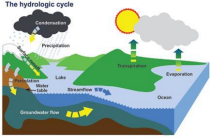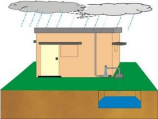Class 10 Social Science Chapter 3 – Water Resources Solutions | NCERT | CBSE Board (English Medium)
Class 10 Social Science Chapter 3 – Water Resources (NCERT Solutions for CBSE Board – English Medium)
This chapter from Contemporary India – II (Geography) explains the importance of water as a vital renewable resource, its uneven distribution in India, and the problems of water scarcity. It also focuses on the multi-purpose river valley projects and rainwater harvesting as methods of conservation.
✅ What You Will Learn:
- Importance of freshwater resources in India
- Causes of water scarcity and its impact on society
- Multi-purpose river valley projects (Bhakra Nangal, Sardar Sarovar, Hirakud, etc.)
- Advantages and criticisms of dams
- Innovative conservation practices like rainwater harvesting and rooftop water collection
🎯 Ospin Academy Advantages:
- Complete NCERT Solutions for Geography Chapter 3
- Aligned with CBSE Board Exam requirements
- Detailed answers for descriptive, short, and map-based questions
- Includes examples of traditional and modern water conservation methods
- Helps students link the chapter with real-life case studies
Class 10 Social Science (CBSE 2025) | English Medium Chapter-wise Solutions PDF
Board Exam Special!
(For CBSE Class 10, 2025)
Master Class 10 Social Science (English Medium) with this chapter‑wise solutions PDF.
Covers History, Geography, Civics & Economics as per latest NCERT syllabus.
Perfect for self-study, revision, and CBSE 2025 exam preparation.
Chapter 3
Water Resources
Q.1 (i) Based on the information given below classify each of the situations as ‘suffering from water scarcity’ or ‘not suffering from water scarcity’.
(a) Region with high annual rainfall.
(b) Region having high annual rainfall and large population. (c) Region having high annual rainfall but water is highly polluted. (d) Region having low rainfall and low population.
Ans.: (a) Not suffering from water scarcity. This is because the freshwater and groundwater are replenished with the annual rainfall.
(b) Not suffering from water scarcity. If the annual rainfall is high, then there is no scarcity of water. Both the freshwater and the ground water levels are replenished.
(c) Suffering from water scarcity. If there is high rainfall and the water is polluted, then there will be scarcity as the water is unfit for domestic, industrial or agricultural use.
(d) Not suffering from water scarcity. In this case the rainfall is low, but the population is also low. In such cases the demand of water by the population is met. As the usage is not too much, water scarcity will not prevail.
Q.1(ii) Which one of the following statements is not an argument in favour of multi-purpose river projects?
(a) Multi-purpose projects bring water to those areas which suffer from water scarcity.
(b) Multi-purpose projects by regulating water flow helps to control floods.
(c) Multi-purpose projects lead to large scale displacements and loss of livelihood.
(d) Multi-purpose projects generate electricity for our industries and our homes.
Ans.: (c) Multi-purpose projects lead to large scale displacements and loss of livelihood. This point is not an argument as in this case, the water destroys agricultural and forest land. Plus, the people living in those areas are rendered homeless.
Q.1(iii) Here are some false statements. Identify the mistakes and rewrite them correctly.
(a) Multiplying urban centres with large and dense populations and urban lifestyles have helped in proper utilisation of water resources. (b) Regulating and damming of rivers does not affect the river’s natural flow and its sediment flow.
(c) In Gujarat, the Sabarmati basin farmers were not agitated when higher priority was given to water supply in urban areas, particularly during droughts.
(d) Today in Rajasthan, the practice of rooftop rainwater harvesting has gained popularity despite high water availability due to the Rajasthan Canal.
Ans.: (a) Multiplying urban centres with large and dense populations and urban lifestyles have caused the over exploitation of water resources. These urban centres require land and so, a lot of forest cover is destroyed. Thus, the ecological balance is disturbed. Due to this, the rainfall decreases and so does the groundwater. So, this has caused over exploitation of water resources.
(b) Regulating and damming of rivers affect the river’s natural flow and its sediment flow. In the natural flow of a river, there are sediments deposited on the banks which increase the fertility of the soil. Most of the civilisations have been situated on river banks. Thus, if the water is in a standstill state, the sediment flow is disturbed.
(c) In Gujarat, the Sabarmati basin farmers were agitated when higher priority was given to water supply in urban areas, particularly during droughts. When there is draught, then there is not only less water for domestic use, but also for agricultural use. So, the farmers were agitated when the priority was gives to urban areas as the farmers depend completely on the agricultural produces.
(d) Today in Rajasthan, the practice of rooftop rainwater harvesting is on the decline due to the Rajasthan canal. The Rajasthan Canal, also known as Indira Gandhi Canal, was created to make irrigation water available to the semi-arid regions of the state. Now, as water is easily available, the residents are less dependent on rainwater harvesting.
Q.2 Answer the following questions in about 30 words.
(i)Explain how water becomes a renewable resource.
Ans.: Our water needs are completed from two water sources – groundwater (underground aquifers) and surface water (lakes, rivers, streams). Water cycle is the process which replenishes the water in these sources. Whenever there is rainfall, the water seeps down the surface and replenishes the ground water, then ones which fall to the water bodies (rivers, lakes, etc.) renew the surface water. The water which flows down and get collected also adds both to surface and groundwater. The heat evaporates the surface water and condenses in the clouds. This is the process by which water is renewed. This is called Hydrological cycle.

Q.2(ii) Answer the following questions in about 30 words . What is water scarcity and what are its main causes?
Ans.: Water scarcity occurs when the availability of water is not enough to match the demand for it. This caused by over exploitation of water resources. Increase in population, deforestation, wastage of water, are a few examples. The ever-increasing populations’ demand for water is also increasing which makes the water availability unequal. Water is also used for irrigation and industrial use. This also contributes a lot in water scarcity.
Q.2(iii) Answer the following questions in about 30 words.
Compare the advantages and disadvantages of multi-purpose river projects.
Ans.: Advantages of multi-purpose river projects: Multi-purpose river projects, as the name suggests, makes water available for multiple uses. It provides water for irrigation and domestic use. This water is also used for hydroelectricity. This also prevents floods, and is used for fish breeding and inland navigation. Example, Hirakund project in the Mahanadi basin helps in conservation of water and flood control.
Disadvantages: Collecting water in dams disturbs the natural flow. This means that the sediment deposition on the river banks will be lesser. This
also causes excessive sediment deposition at the bottom of the reservoir, disturbing the natural aquatic life. This has also caused disputes between states regarding the sharing it’s costs and water availability. If the water is in a still state, there are chances of diseases being spread. Collecting the water in a reservoir also means that a lot of land will be covered which was, once, a forest cover or a village. The reservoir water also causes pollution due to excessive use of water.
Q.3(i) Answer the following questions in about 120 words.
Discuss how rainwater harvesting in semi-arid regions of Rajasthan is carried out.
Ans.: People in Rajasthan follow rooftop water harvesting to store drinking water. In the arid and semi-arid regions, the agricultural fields are covered in water storage structures which store the rainwater. This allows the soil to be moistened, like we see “khadins” in Jaisalmer and “Johads” in the other parts of Rajasthan. In the semi-arid and arid regions, particularly in Bikaner, Phalodi and Barmer, most of the houses have traditional underground water storage tanks or “tankas” for the storage of drinking water. The size of the tanks differ, they can a big room inside the main house or a storage tank in the courtyard. They are connected to the sloping roofs of the houses through a pipe. The rainwater falls down the pipes and is collected in the underground “tankas”. In the western part of the state, the rainwater harvesting has declined due to the construction of the Indira Gandhi Canal. This makes the availability of water in plenty and thus, people refrain from using the rooftop rainwater harvesting technique.
Q.3(ii) Answer the following questions in about 120 words.
Describe how modern adaptations of traditional rainwater harvesting methods are being carried out to conserve and store water.
Ans.: The traditional methods of rainwater harvesting are:
1. Rooftop rainwater harvesting is the most common practice in the states of Shillong and Meghalaya. Though Cherrapunji and Mawsynram, located at a distance of just 55 km from Shillong receive the highest rainfall in the world, yet there is acute shortage of water in the capital city. Nearly every household has a rooftop rainwater harvesting structure set up.
2. Tamil Nadu is the first and only state to have made rooftop rainwater harvesting compulsory to all houses. There are legal provisions to punish the offenders and defaulters.
3. In many parts of rural and urban India, people are adopting rooftop rainwater harvesting for storage and conservation of water. In Gendathur, a remote village Mysore, Karnataka, the villagers have installed rooftop rainwater harvesting structures in their homes to cater their water needs. As many as 200 households have accepted and installed this system which has earned a distinction of being rich in rainwater.

Class 10 Social Science Chapter 8 – Frequently Asked Questions
Get Free NCERT PDFs
If you want to download free PDFs of any chapter, click the link below and join our WhatsApp group:


